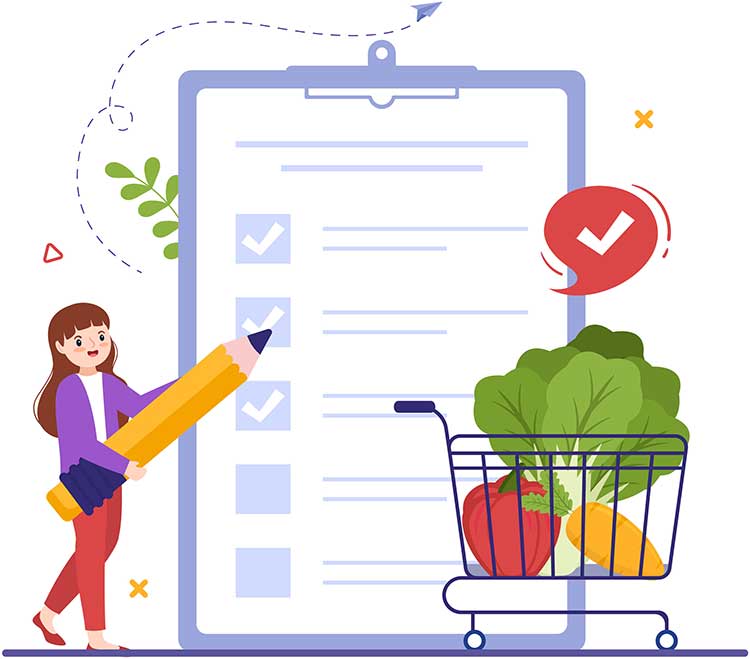Which Grocery Stores Offer the Best Prices?
Last updated November 2025

Our ratings of grocery stores report how major U.S. chains stack up for price and quality. To compare prices, our researchers used a market basket of 150 common items to shop grocery-store options in seven metro areas (the Boston, Chicago, Minneapolis-St. Paul, Philadelphia, San Francisco, Seattle, and Washington, D.C. areas). To evaluate stores on quality of products and service, we surveyed area consumers. Here’s a rundown of the results:
ALDI and Lidl offer the biggest savings.
German-based discounters ALDI and Lidl, ubiquitous in most of western Europe, continue to expand their U.S. footprints. These chains focus on low costs, and our survey found them quite inexpensive: For our shopping list, ALDI’s prices were 30 to 40 percent lower than the all-store average, and Lidl’s were about 20 to 25 percent lower. ALDI’s per-unit prices were even lower than Costco and Sam’s Club.
These savings are partly explained by ALDI’s and Lidl’s smaller-format stores, which have much lower overhead costs than conventional supermarkets.
ALDI and Lidl also benefit from different expectations. Shoppers at conventional supermarkets (Safeway, Walmart, etc.) expect to always find their favorite brands in a variety of sizes on the shelves. Like Trader Joe’s, ALDI and Lidl carry mostly their own brands, not national-brand products. ALDI and Lidl do offer some national brands, but overall, selection is limited. In other words, you’ll find some of the most popular brands (Coke, Heinz ketchup, Hellmann’s mayo, etc.) at ALDI and Lidl, but probably only in one size.
So, shoppers at quirky ALDI and Lidl don’t expect wide choices of brands or sizes. Instead, they’re being offered comparable products in exchange for big savings. (To account for brand differences, we used a modified market basket to compare prices at ALDI, Lidl, and Trader Joe’s to prices at conventional supermarkets; click here for more info.)
Among Conventional Supermarkets, Amazon Fresh, FoodsCo., FoodMaxx, Grocery Outlet, Market Basket, Meijer, Price Rite, Smart & Final, Walmart, and WinCo win for price.
Our shoppers found these discounters consistently offered very low prices compared to the average prices at the stores we surveyed, typically 12 to 30 percent below the all-store average in each area. For a family that spends $300 per week at the supermarket, a 10 percent price difference totals $1,560 per year; a 15 percent price difference totals $2,340 per year; and a 25 percent difference adds up to nearly $4,000.
Amazon Fresh began opening its first brick-and-mortar locations in 2021. These small-format stores focus on low costs and convenience (the company’s app keeps track of what you remove from shelves; when finished, you simply exit without scanning items).
Other price standouts include Hannaford, Food 4 Less, Food Lion, Fred Meyer, Hy-Vee, Meijer, Fred Meyer, and, in some markets, Target.

Most large, traditional supermarket chains get low marks from their customers—and don’t offer impressive prices, either.
In our surveys of consumers, most of the largest chains in the seven metro areas we studied were rated poorly for quality of products and service. Acme, Albertsons, Cub, FoodMaxx, Giant (Washington area), Jewel-Osco, Lucky, Safeway, Shaw's, Shoppers Food, and Stop & Shop were each rated "superior" overall by fewer than half of their surveyed customers.
Many of the price winners also earned very poor ratings from their customers
Food Lion, Grocery Outlet, Price Rite, Target, Walmart, and WinCo received dismal reviews from their surveyed customers.
In most markets, the largest chains charge similar prices.
Overall, chains owned by Albertsons and Kroger had prices that were higher than average—and within one or two percent of one another.
Trader Joe’s remains popular—and relatively inexpensive.
The funky-and-fun chain received high ratings in most markets for “overall quality.” And TJ’s prices were typically 10 to 20 percent lower than the all-store average.
Whole Foods remains an expensive choice—and its ratings for quality continue to dip.
When Amazon purchased Whole Foods in 2017, many experts predicted the combination would punish its supermarket competition by combining Whole Foods’ solid reputation with Amazon’s pursuit of distribution perfection. Many consumers hoped they’d pay Amazon-like prices for Whole Foods-quality products. That hasn’t materialized.
Whole Foods built a loyal following by offering high-quality produce, meat, prepared foods, and generic staples. For years it earned high marks in our surveys of consumers, especially for produce and meat quality. Now, Whole Foods’ customers give it far lower scores: On our “overall quality” survey question its score has dropped significantly.
Our price survey found that Whole Foods remains among the most expensive among the big chains we shopped in each of the seven metro areas.
A handful of smaller local and regional chains offer high-quality products and service—without imposing a big price penalty.
In many of the seven metro areas we studied, there are one or two regional or local chains that are fan favorites for offering high-quality products and service at reasonable or low prices. For example, in the Boston area, Market Basket offers low prices and received high overall ratings from its customers. In the Chicago area, shoppers love Woodman’s offers low prices and received high overall ratings from its customers. And in the Boston, Philadalphia, and Washington, D.C., areas, Wegmans for several years has consistently earned very high ratings from its customers for quality and charges prices that are lower than traditional chains like Acme, Giant, Safeway, Shaw's, ShopRite, and Stop & Shop.
But in some cities, you can’t have it all.
In the San Francisco and Seattle areas, we found that the stores that offer the lowest prices don’t receive the highest ratings from their surveyed customers.


